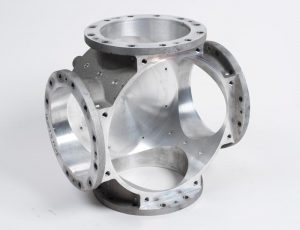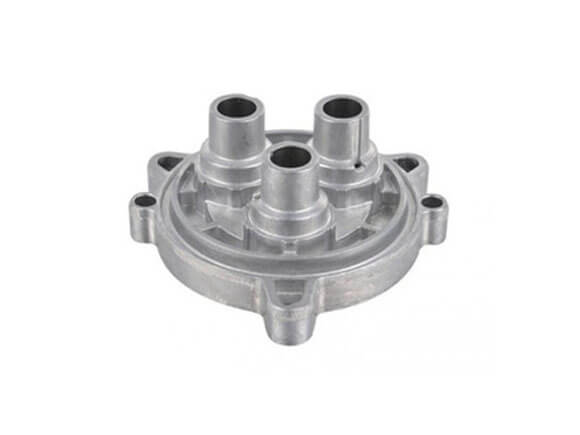Aluminum Casting Explained: Key Realities and Insights for Market Professionals
Aluminum casting functions as an important process in modern-day production, forming elements throughout different markets. Its diverse techniques, such as sand and die casting, provide to different production demands. The special residential or commercial properties of aluminum alloys enhance their applicability, yet challenges stay in maintaining high quality and performance. Comprehending these elements is vital for industry specialists. What are the most recent developments and ideal techniques that can further enhance this procedure?
Review of Aluminum Casting Processes

Secret aspects of aluminum casting processes include the prep work of molds, which might be made from sand, metal, or ceramic materials, depending upon the intended usage. Additionally, temperature level control is crucial to guarantee correct melting and solidification of aluminum.
The casting procedure permits elaborate layouts and can attain high levels of dimensional accuracy. As soon as cooled, the spreadings might undergo ending up operations such as machining or surface area therapy to satisfy particular performance criteria. On the whole, aluminum casting functions as a flexible manufacturing method, successfully satisfying the diverse demands of different industries.
Sorts Of Aluminum Casting Approaches
In the domain name of aluminum casting, different methods are employed to attain different outcomes. Sand casting methods provide adaptability and cost-effectiveness for intricate shapes, while die casting procedures use high precision and performance for mass manufacturing. Comprehending these approaches is necessary for choosing the appropriate approach based upon task needs.
Sand Casting Techniques
Sand casting methods stand for an essential technique in aluminum casting, where sand is used as a mold product to form molten steel. This procedure entails producing a pattern from the preferred part, which is then placed in a sand combination to develop a mold and mildew. The sand is compacted around the pattern, and after removal, it creates a dental caries in the shape of the part. Molten aluminum is put right into this tooth cavity, allowing it to strengthen and cool. One substantial benefit of sand casting is its versatility; it can suit complicated forms and huge components. Additionally, the materials used are fairly affordable, making it an easily accessible alternative for numerous manufacturing applications in the aluminum sector.
Die Casting Processes
Die casting procedures are a prominent method for shaping aluminum elements, using high-pressure methods to require liquified steel right into precisely engineered molds. This process is particularly preferred for its ability to generate complicated shapes with tight tolerances and a smooth surface. There are 2 key kinds of die casting: hot chamber and chilly chamber. Hot chamber die casting is appropriate for steels with reduced melting factors, enabling for faster manufacturing prices. On the other hand, cool chamber die casting is ideal for higher melting point metals, calling for a separate melting furnace. Both techniques enhance efficiency and decrease material waste, making them vital in automobile, aerospace, and durable goods markets. Comprehending these processes helps experts select one of the most proper technique for their specific applications.
Material Properties of Aluminum Alloys

Toughness and Sturdiness
Stamina and longevity are vital features of aluminum alloys that make them suitable for various casting applications. These products show a favorable strength-to-weight ratio, permitting the production of lightweight yet robust components. With regard to tensile stamina, certain aluminum alloys can be crafted to hold up against significant tons without warping. This residential property is specifically important in industries such as aerospace and automobile, where efficiency and security are vital. Furthermore, aluminum alloys often keep their mechanical buildings under varied temperature level problems, guaranteeing consistent performance. The innate ductility of these alloys additionally permits for reliable shaping throughout the casting procedure, making it much easier to create complicated geometries. Generally, the stamina and longevity of aluminum alloys add considerably to their extensive use in advanced applications.
Corrosion Resistance Characteristics
While aluminum alloys are treasured for their toughness and light-weight properties, their corrosion resistance is another essential feature that improves their suitability for different applications. Aluminum normally creates a safety oxide layer when revealed to dampness, which assists to stop further oxidation. This integral home makes aluminum alloys particularly beneficial in atmospheres vulnerable to rust, such as industrial and aquatic settings. In addition, different alloy compositions can affect resistance levels, with particular alloys particularly engineered to improve this characteristic. Therapies like plating can additionally enhance deterioration resistance by thickening the oxide layer. Comprehending the corrosion resistance of aluminum alloys is necessary for industry specialists when picking products for tasks requiring durability and durability in tough settings.
Benefits of Aluminum Casting in Production
Aluminum casting offers countless advantages in manufacturing, making it a recommended choice for different sectors. One significant advantage is its light-weight nature, which adds to decreased transport prices and improved energy performance in end right here items. Additionally, aluminum's excellent thermal and electrical conductivity improves performance in applications calling for heat dissipation or electrical transmission.
The product's capacity to be cast into elaborate shapes enables for style adaptability, lowering the demand for added machining procedures. In enhancement, aluminum casting exhibits exceptional rust resistance, causing longer product life expectancies and lower upkeep prices.

Typical Applications of Aluminum Castings
The flexibility of aluminum casting allows its prevalent use throughout different markets. Typical applications include automotive components, where lightweight and corrosion-resistant elements, such as engine blocks and transmission real estates, boost car performance. In the aerospace sector, aluminum castings are made use of for architectural components, supplying toughness without including significant weight.
Additionally, the electric market gain from aluminum castings in making units and heat sinks, where thermal conductivity is necessary. The customer items sector also integrates aluminum castings in products like kitchenware, furniture, and attractive products, integrating aesthetics with functionality.
The building market utilizes aluminum castings for architectural elements, home window structures, and fixtures, which supply toughness and style versatility. In general, the diverse applications of aluminum spreadings emphasize their value in contemporary manufacturing, adding to innovations in effectiveness and product design throughout several fields.
Innovations and Technical Improvements
As industries continue to evolve, technologies in aluminum casting modern technology are changing production processes and item capacities. Developments in 3D printing and additive manufacturing have allowed the creation of intricate geometries that were previously difficult to accomplish with conventional methods. These technologies permit for quick prototyping, decreasing lead times and prices.
In addition, improvements in mold and mildew layout and products have actually improved the casting procedure by increasing efficiency and decreasing waste. The integration of wise manufacturing methods, such as IoT tools and real-time blog data analytics, enables far better surveillance and optimization of production specifications, leading to better outputs.
Developments in aluminum alloys give boosted toughness, deterioration resistance, and lightweight buildings, catering to the growing needs in vehicle and aerospace industries. Collectively, these innovations are not only enhancing performance yet also meeting the extensive criteria of modern engineering applications.
Finest Practices for Quality Assurance in Aluminum Casting
Ensuring high-grade outputs in aluminum casting requires adherence to finest methods that incorporate numerous stages of the manufacturing procedure. Initially, thorough material evaluation is necessary to validate the quality of aluminum alloys used, as impurities can considerably affect the final product. Executing exact melting and pouring methods minimizes defects; maintaining perfect temperature levels protects against oxidation and advertises uniformity.
Furthermore, mold and mildew layout plays an important duty; utilizing computer-aided design (CAD) can enhance accuracy and lower human mistake. Normal tracking of the cooling procedure Discover More is critical to prevent bending and shrinking. Additionally, making use of non-destructive screening techniques, such as ultrasonic or X-ray inspections, assists recognize interior imperfections without damaging the parts.
Developing a comments loophole with drivers and designers promotes continuous renovation, making sure that high quality control measures evolve along with technological advancements. By complying with these ideal techniques, producers can improve the integrity and performance of aluminum spreadings.
Regularly Asked Questions
What Are the Ecological Impacts of Aluminum Casting?
The environmental effects of aluminum casting consist of considerable power intake, greenhouse gas emissions, and potential water pollution from factory procedures. In addition, bauxite mining for aluminum ore can lead to habitat devastation and dirt degradation.
How Does Aluminum Casting Compare to Various Other Steel Casting Procedures?
Aluminum casting typically provides advantages in lightweight elements and rust resistance compared to various other processes, such as iron or steel casting, which may supply greater stamina however result in heavier and less corrosion-resistant items. - Aluminum Foundry
What Are Common Defects in Aluminum Castings and Their Reasons?
Usual flaws in aluminum spreadings include porosity, shrinking, and additions. Reasons usually stem from improper putting strategies, poor mold and mildew design, or contamination of the liquified steel, influencing the end product's integrity and performance.
What Safety and security Preventative Measures Should Be Taken Throughout Aluminum Casting?
During aluminum casting, essential safety and security preventative measures include wearing safety gear, guaranteeing appropriate ventilation, maintaining a clean work area, managing molten metal with treatment, and complying with well established procedures to reduce risks of burns, breathing risks, and mishaps.
Just How Can I Enhance the Effectiveness of My Aluminum Casting Operations?
To boost effectiveness in aluminum casting operations, one need to enhance mold layout, enhance material handling, use automated processes, perform regular upkeep on devices, and purchase worker training to improve abilities and productivity.
Different methods exist, aluminum casting includes several key processes that cater to various applications and demands. Trick elements of aluminum casting processes include the prep work of mold and mildews, which may be made from sand, steel, or ceramic products, depending on the planned usage. Sand casting techniques represent a basic approach in aluminum casting, where sand is utilized as a mold material to shape liquified steel. As sectors continue to advance, technologies in aluminum casting innovation are transforming production procedures and product abilities. Making certain high-quality outcomes in aluminum casting needs adherence to best techniques that encompass various stages of the manufacturing process.